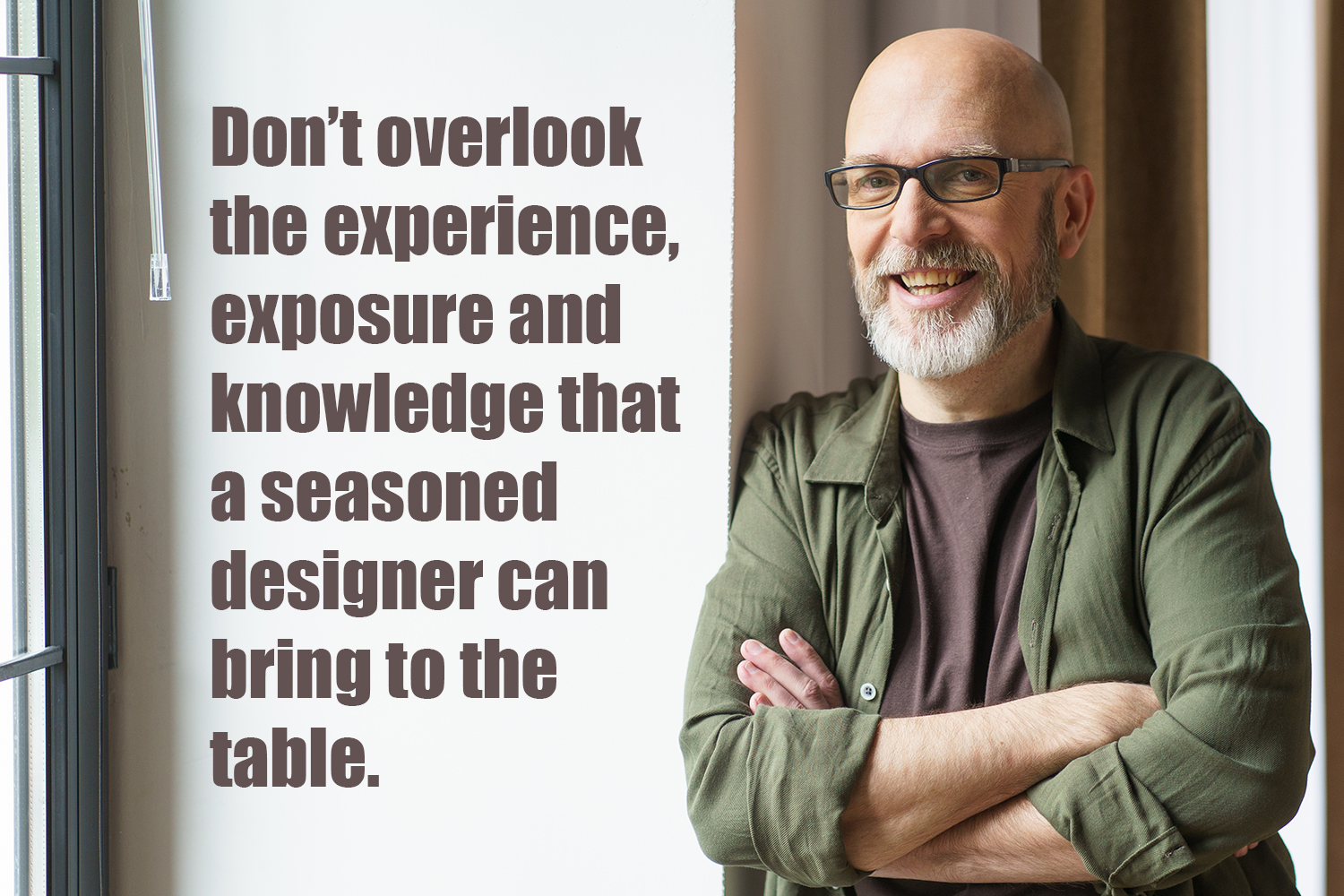
UNVEILING AGEISM IN GRAPHIC DESIGN
CHALLENGING STEREOTYPES AND EMBRACING DIVERSITY
In the dynamic world of graphic design, where creativity knows no bounds and innovation fuels the industry’s growth, ageism often lurks beneath the surface, casting shadows on the talents and contributions of seasoned professionals. Ageism, the prejudice or discrimination against individuals based on their age, permeates various sectors, and the field of graphic design is no exception.
While the design industry prides itself on being progressive and forward-thinking, ageism remains a persistent issue, impacting both young designers entering the field and experienced professionals seeking to advance their careers or maintain relevance in an ever-evolving landscape.
Youth-Centric Culture: A Double-Edged Sword
In the realm of graphic design, there exists a prevailing notion that youth equates to innovation and adaptability. The industry often prioritises young designers, perceiving them as more in tune with contemporary trends, technology, and consumer preferences.
While youthful energy undoubtedly brings fresh perspectives and creative insights, it’s essential to recognise the value of experience and expertise that older designers bring to the table.
Moreover, the glorification of youth culture in graphic design can create an environment where older professionals feel marginalised or overlooked, leading to diminished opportunities for career advancement or professional recognition.
Technology and Skillset Bias
Advancements in technology have revolutionised the practice of graphic design, introducing new tools, software, and techniques that streamline workflows and expand creative possibilities.
However, this rapid pace of technological innovation can inadvertently disadvantage older designers who may not have grown up with the latest digital platforms or possess the same level of technical proficiency as their younger counterparts.
Ageism in graphic design often manifests in the form of assumptions about an individual’s adaptability to new technologies or willingness to embrace emerging trends.
Such biases undermine the diverse skill sets and experiences that designers of all ages bring to the profession, perpetuating stereotypes and limiting opportunities for collaboration and mentorship across generations.
The Value of Experience and Perspective
Contrary to ageist stereotypes, experience is a valuable asset in graphic design, honed through years of practice, experimentation, and exposure to diverse projects and clients. Seasoned designers bring a depth of knowledge and a refined aesthetic sensibility that can elevate the quality of creative work and drive meaningful innovation within the industry.
Furthermore, older designers often possess a wealth of institutional knowledge and historical context that enriches their design practice and enables them to navigate complex challenges with insight and foresight.
Embracing a multigenerational approach to graphic design fosters a culture of mentorship, collaboration, and mutual learning, where designers of all ages can contribute their unique perspectives and skills to collective success.
Combatting Ageism: Promoting Inclusivity and Diversity
Addressing ageism in graphic design requires a collective effort to challenge stereotypes, foster inclusivity, and promote diversity across all levels of the industry.
Design firms, educational institutions, and professional organisations play a pivotal role in advocating for equitable hiring practices, promoting intergenerational mentorship programs, and creating inclusive environments where designers of all ages feel valued and empowered to thrive.
Additionally, ongoing professional development initiatives, such as workshops, seminars, and networking events, can provide older designers with opportunities to enhance their technical skills, stay abreast of industry trends, and connect with peers and mentors across generations.
By celebrating the rich tapestry of experiences, perspectives, and talents that define the graphic design community, we can break down barriers, challenge ageist attitudes, and cultivate a more inclusive and vibrant creative ecosystem where designers of all ages can flourish and leave a lasting impact on the world of design.
CDS welcomes people of all ages and backgrounds to achieve their potential and develop their skills in this ever-changing, dynamic industry.

COMPLETE COURSES LIST 2024 - 2025
SCHOOL OF GRAPHIC DESIGN
Graphic Design for Beginners Level 1
Graphic Design Level 2
Advanced Graphic Design Level 3
SPECIALIST DESIGN COURSES LEVEL 4
Advertising Design Level 4
Brand & Corporate ID Design Level 4
Packaging Design Level 4
Visual Communication Level 4
PROFESSIONAL + BUSINESS COURSES LEVEL 5
Creative Thinking & Process Techniques PL5
Creative Team Building PL5
SCHOOL OF TEXTILE DESIGN
Textile Design for Beginners Level 1
Textile Design Level 2
SHORT COURSES + WORKSHOPS
Introduction to Graphic Design Short Course
Logo Design Short Course
Creative Thinking Short Course
Become a Freelancer Short Course
Digital Illustration for Beginners Short Course
